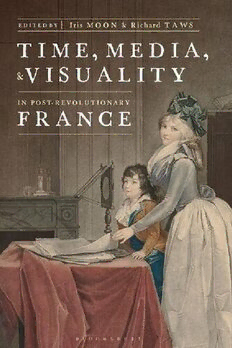
Time, Media, and Visuality in Post-Revolutionary France PDF
313 Pages·2021·5.817 MB·French
Most books are stored in the elastic cloud where traffic is expensive. For this reason, we have a limit on daily download.
Preview Time, Media, and Visuality in Post-Revolutionary France
Description:
The radical break with the past heralded by the French Revolution in 1789 has become one of the mythic narratives of our time. Yet in the drawn-out afterlife of the Revolution, and through subsequent periods of Empire, Restoration, and Republic, the question of what such a temporal transformation might involve found complex, often unresolved expression in visual and material culture.This diverse collection of essays draws attention to the multiple points of view and refracted forms of visuality that emerged in France from the beginning of the French Revolution through to the end of the July Monarchy in 1848. It offers a new account of the story of French art’s modernity by exploring the work of genre painters and miniaturists, sign-painters and animal artists, landscapists, architects, and restorers, as they worked out what it meant to be “post-revolutionary.”The radical break with the past heralded by the French Revolution in 1789 has become one of the mythic narratives of our time. Yet in the drawn-out afterlife of the Revolution, and through subsequent periods of Empire, Restoration, and Republic, the question of what such a temporal transformation might involve found complex, often unresolved expression in visual and material culture. This diverse collection of essays draws attention to the multiple points of view and refracted forms of visuality that emerged in France from the beginning of the French Revolution through to the end of the July Monarchy in 1848. Instead of the singular masterpiece, it foregrounds the work of genre painters and miniaturists, flower and animal artists, landscapists and portraitists, restorers and teachers, and printmakers of various types, as they worked out what it meant to be “post-revolutionary.” Of particular interest are the small-scale, market-driven, functional, decorative, perverse, or outmoded. Drawing attention to the efflorescence of new media in this period, and to conversations across different genres and media—from architecture to book illustration, from porcelain to fans—this book asks how art made at this time related to other techniques, institutions, spectacles, careers, audiences, and social practices.
See more
The list of books you might like
Most books are stored in the elastic cloud where traffic is expensive. For this reason, we have a limit on daily download.
